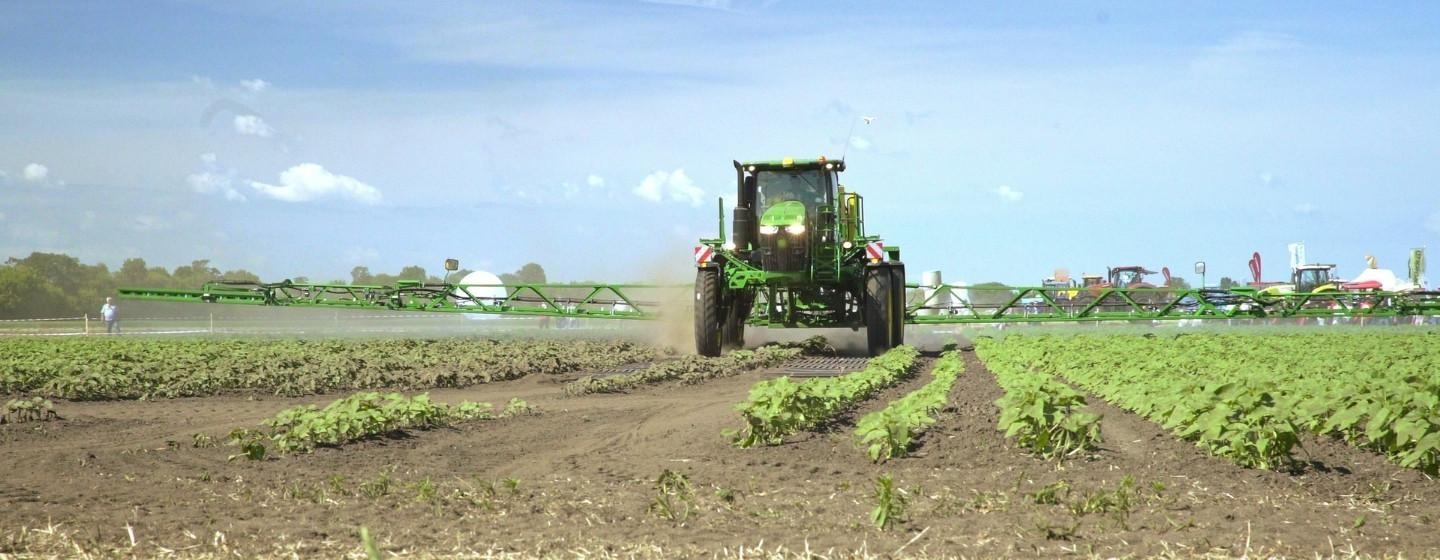Can AI Help Our Farms?


Most people think of tractors, silos, barns and various animals and crops when they think of farming. Supercomputers, cameras and terabytes of information likely don’t come to mind.
But at the North Carolina Plant Sciences Initiative (N.C. PSI) at NC State, data is considered an essential part of farm equipment. It’s crucial to the future of farming, which must grow more food for a rapidly increasing population, use less farmland to grow that food and navigate the challenges of climate change and new crop diseases and pests.
It’s a lot.
Researchers believe “precision agriculture” powered by artificial intelligence (AI) can help.
“You can’t turn on the TV without hearing two letters—AI,” said Jevon Smith, N.C. PSI research computing manager, in a release about the program. “There are so many bad stories about AI out there, but the applications in the agriculture sector include increasing crop yields, reducing waste, helping reduce carbon emissions, and more. It can be used for great good.”
But, just as a farmer must first plant seeds, researchers need to train their AI software before computers crunch data and produce results.
That’s where the NVIDIA Grace Hopper 200 comes in. N.C. PSI researchers say it’s the most powerful computer of its kind on NC State’s campus. The computer can handle five terabytes of data per second. Right now, researchers are sending images of crops, weeds, flowers and plants that grow on farms to create what Chris Reberg-Horton, Ph.D., PSI platform director for resilient agriculture, calls the world’s largest open-source agricultural image repository.
There’s also a robot named BenchBot 3.0, which sits in an empty field next to the Plant Sciences Building on NC State’s Centennial Campus. The robot can snap more than a half million plant photos as it passes over 500 pots of various plants.
Two other BenchBots are being deployed to collect images for the project at different locations. One is at the U.S. Department of Agriculture’s Agricultural Research Center in Beltsville, Maryland, while the other will be based at College Station, home of Texas A&M University. All images captured by those three systems will be sent to the NVIDIA Grace Hopper.
To understand precision agriculture, think about how a self-driving car works. Technicians must train computers to understand and recognize everything a car “sees,” from crosswalks and stoplights to pedestrians and even other cars.
It’s the same with precision agriculture. The computer must be taught what a weed is, what a crop is, what different types of soils and soil conditions look like, which insects are good or bad for plants and so on. That collection of photos will be used to develop software and tools to help farmers make decisions about their crops, including when and where to add additional water, fertilizer and even spray for weeds and insects.
This allows farmers to deliver exactly what a plant needs when it needs it. For example, instead of spraying an entire field for insects, which would be expensive, a farmer could just spray the section where pests are a problem. That would protect crops, limit chemical use and be better for the environment.
“We’ve been talking about precision agriculture for decades,” said Reberg-Horton. “It’s really been aspirational for the most part because we have to have lots of knowledge about a field to be able to manage each piece of the field optimally. The smart equipment is available now to apply most of our inputs variably. But we have been stuck on creating enough intelligence to tell that equipment what to do.”
Researchers hope that as that missing information is gathered, the new technology can help farmers in the future.
Watch this State of Changestory to learn how the Utopian Seed Project in western North Carolina is helping farmers build a more climate-resilient future.
The Utopian Seed Project works to build NC’s climate resiliency through crop diversity.